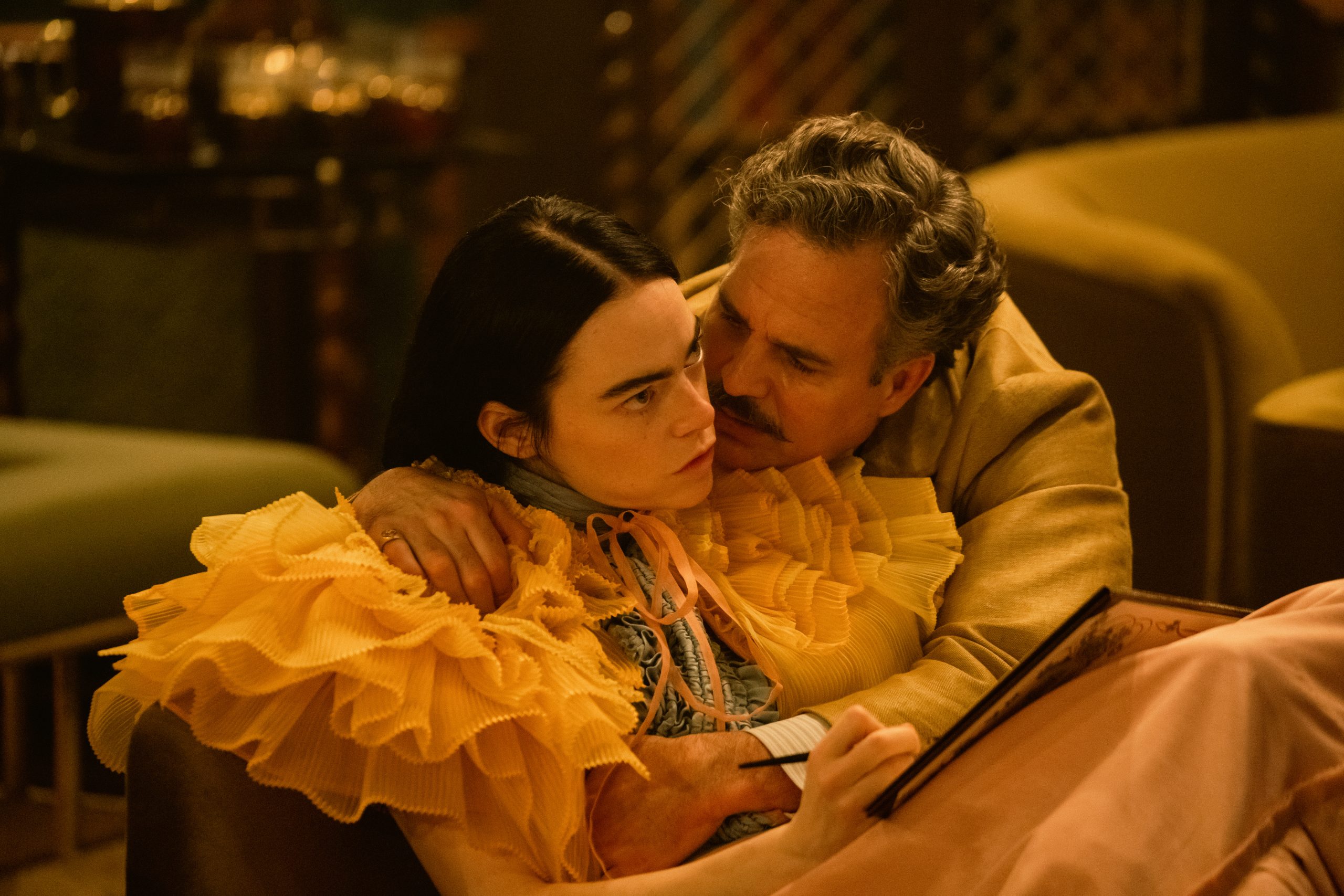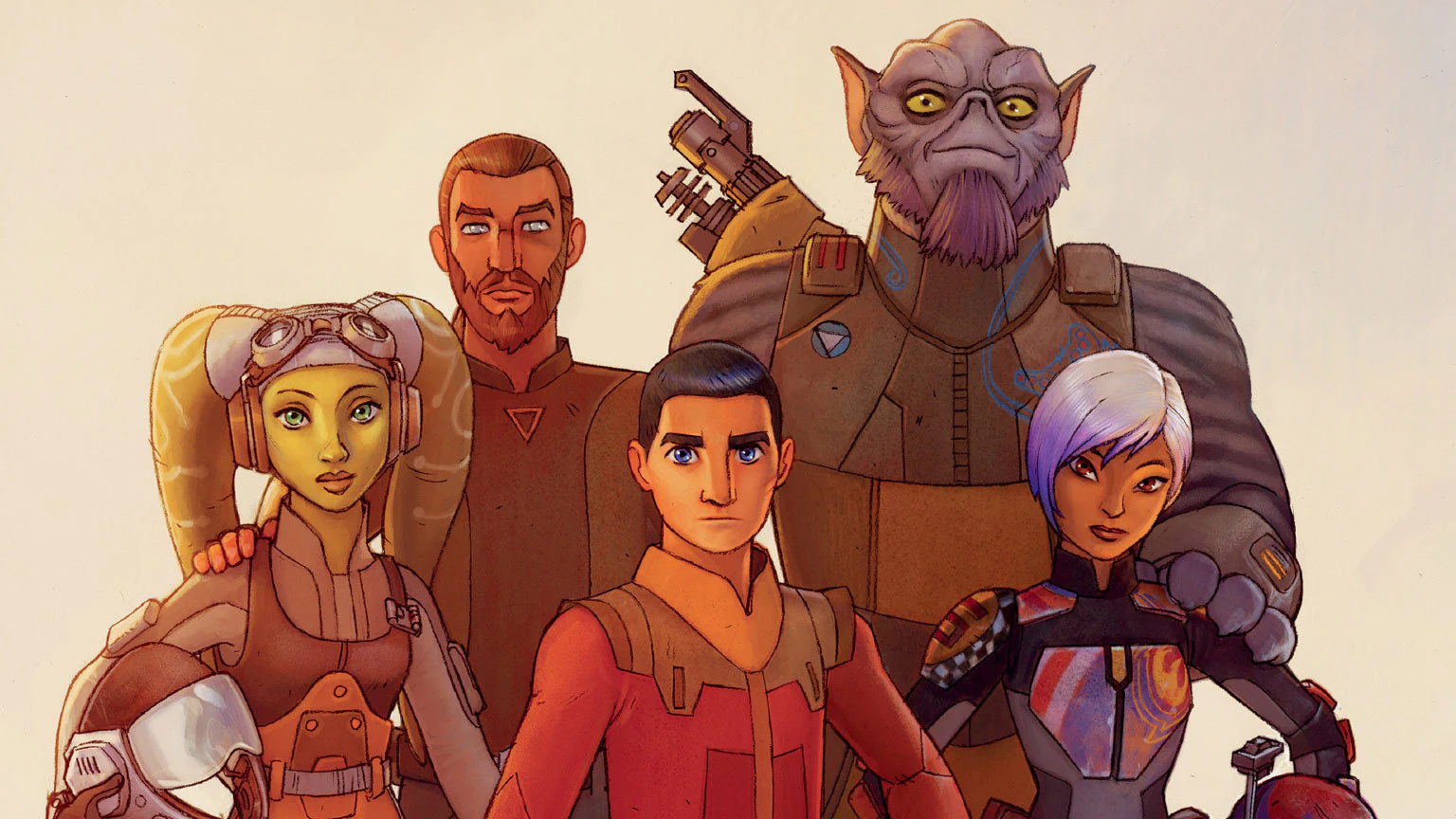‘Poor Things’ Review: Emma Stone and Mark Ruffalo Lead Mesmerizing Film by Yorgos Lanthimos About Womanhood

Emma Stone and Mark Ruffalo in POOR THINGS. Photo by Atsushi Nishijima. Courtesy of Searchlight Pictures. © 2023 Searchlight Pictures All Rights Reserved.
The world is broken and it takes someone observing it with fresh eyes and the audacity to break the wheel to notice it, argue Yorgos Lanthimos and writer Tony McNamara in Poor Things. That someone is Bella Baxter (Emma Stone), the product of Godwin Baxter’s (Willem Dafoe) mind after decades of experimenting with human and animal anatomy. After finding a young, pregnant woman on the brink of death, the audacious scientist attempts a surgery like no other: replacing the woman’s brain with her child’s. With that, he brings her back to life, which she’s now able to experience with the fresh eyes of a giant baby evolving rapidly under his adoptive father’s watch.
Once she runs free from the four walls Godwin is keeping her in, Bella’s black-and-white world is filled with color as she discovers the wonders of the Earth beyond her doorstep. It is here that Emma Stone’s dazzling performance reaches new heights — she is funny and quirky in the film’s opening act, before she meets Mark Ruffalo’s Duncan Wedderburn and runs off on a transcontinental journey of self-discovery and eagerness to experience new things and never take anything for granted, but once her picture is filled with color, Stone’s performance truly takes off, adopting as many layers and tonalities as the color palette of the different acts of the film. (Disclosure: I would still give the edge to her magical turn as Mia Dolan in La La Land.)
The original source material, a novel by Alasdair Gray, played with different points of view across several characters, but this is purely Bella Baxter’s story, and it’s for the best. This is the point Lanthimos and Stone, who also produced the film, are trying to make: Poor Things is a story about experiencing the world without the constraints of society’s norms and unwritten rules of “politeness”, and most importantly, how to grow up as a woman in a world that presents so many unnecessary complications.
One of the main themes of the film is the exploration of female sexuality, with one of Bella’s most important character arcs being understanding her own desires and limitations, and also how those are then seen and interpreted by the men around her. As explained by Stone in the film’s press notes: “We can watch so much violence and pain inflicted on people in a mass way in America, but nudity and sexuality are shocking to us.” And that’s precisely the point of the film; how many guns can the average audience member tolerate in a movie versus how many naked people, and how does that reflect reality?

Emma Stone and Mark Ruffalo in POOR THINGS. Photo by Yorgos Lanthimos. Courtesy of Searchlight Pictures. © 2023 Searchlight Pictures All Rights Reserved.
The film is mesmerizing in both the ideas it tries to tackle and how it succeeds at doing so. It swings for the fences with its many unconventional plot points and discussions and makes a perfect case for the ridiculousness of our world. Godwin knows from the very beginning of the film that Bella is something special, but it takes a lot of time for us to understand truly why. More than anything, she wants to know. She wants to explore, she wants to live. She’s an avid reader and is enthused about knowing other people and having conversations with them that will reveal their different points of view, whether she agrees with them or not. She may have the mind of an adolescent, but she’s smarter than most adults around her because of how much she knows she doesn’t know.
Bella’s actions seem completely crazy to many of the people around her, and the best example of this is Mark Ruffalo’s Duncan Wedderburn, who is outraged at her behavior on many occasions, yet his own leaves a lot of room for improvement as far as consistency goes — the ultimate alpha male, the controlling partner. He’s jealous of Stone going out and about, flirting with other men, even if he wouldn’t describe her relationship as filled with love. Ruffalo gives Stone a run for her money as the best performer in the film, with a completely out-there turn as the mysterious lawyer who wants Bella as a sex toy rather than an actual human being with thoughts of her own or opinions that may be as valid as his.
There is a little bit for everyone in Poor Things, but most of all, Yorgos Lanthimos wants to challenge the audience and engage with them in a conversation about how we view the world. He isn’t saying that sex work should be legal, he’s asking you why not? It’s not that we should give all of our money to those who need it more, but why is that such a crazy thought? It’s not a coincidence either that Bella spends most of her life surrounded by men, who want to control her and her actions for various reasons. McNamara’s script is very critical of how men view women — one of the best examples being when Ramy Youssef’s Max McCandless confesses his love for Bella when her brain is that of a three-year-old but her body is Stone’s age. What, exactly, does he see in her to realize he would like to spend the rest of his life with her? Food for thought there.

Emma Stone in POOR THINGS. Photo by Atsushi Nishijima. Courtesy of Searchlight Pictures.© 2023 Searchlight Pictures All Rights Reserved.
Poor Things is a beautiful exploration of the world that attempts to take another look at it, be critical of certain standards, and open to new points of view. It’s structured into several chapters of Bella’s journey, some of which are more compelling than others. Towards the end, we meet Christopher Abbott’s Alfie Blessington in what seemed to be an epilogue but was ultimately the last episode of Bella’s arc. However, the momentum of the film was already winding down by then, and introducing yet another storyline seemed to kill the sense of closure we were achieving.
Alfie presented the main character with new ideas and revelations about herself, so it’s not like it was unnecessary from a story perspective. Rather, it was an example of an uneven structure and editing (by Yorgos Mavropsaridis) — an aspect of the filmmaking process that was otherwise off the charts for the rest of the film, so I’m not holding it against it. There’s also the chance that upon second viewing this issue will disappear, once I have a better hold of the story overall. Similarly, there’s a portion of the film that takes place in a brothel in Paris that seemed to take longer than it should had to achieve the same impact on the character.
But this is just a footnote in an otherwise technical marvel of a film. The cinematography by Robbie Ryan is outstanding and the use of color, something that will be studied in film schools for years. Between the unique use of lenses and using every frame as if it was actually a painting, especially those outdoors, and also the aesthetic achieved by the production design, there’s a lot in Poor Things reminiscent of films in the 1930s and 1940s, which help it achieve the sense of belonging as a period piece, while its modern story themes keep the story grounded in our world and make it relevant for audiences today. It’s a subtle combination of factors that play in the favor of one of the year’s best films.
Poor Things will be released in theaters on December 8.
Miguel Fernández is a Spanish student that has movies as his second passion in life. His favorite movie of all time is The Lord of the Rings, but he is also a huge Star Wars fan. However, fantasy movies are not his only cup of tea, as authors like Scorsese, Fincher, Kubrick or Hitchcock have been an obsession for him since he started to understand the language of filmmaking. He is that guy who will watch a black and white movie, just because it is in black and white.






